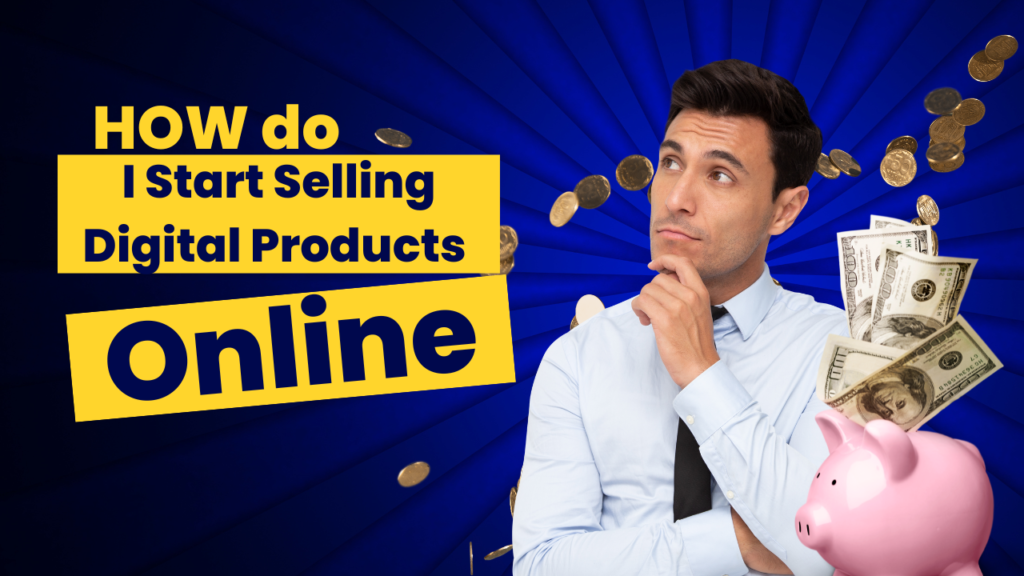
How Do I Start Selling Digital Products Online?
Introduction
So, you’re thinking about diving into the world of selling digital products online. It’s a great idea! The digital marketplace is booming, with countless opportunities to create and sell products without the hassle of physical inventory. But where do you start? This guide will walk you through everything you need to know, from understanding what digital products are to setting up your online store and marketing your products effectively.
Understanding Digital Products
Before you jump in, it’s essential to understand what digital products are. Simply put, digital products are intangible assets or media that can be distributed online without the need for physical materials.
E-books and Audiobooks
E-books and audiobooks are popular choices for digital products. They’re relatively easy to create and can cover a wide range of topics—from self-help guides to fiction novels.
Online Courses and Tutorials
If you have expertise in a particular area, creating an online course or tutorial can be a lucrative way to share your knowledge while earning money.
Software and Apps
Developers can create and sell software programs or mobile apps. These digital products often have high profit margins and can be sold on various platforms.
Templates and Digital Art
Designers can create templates (like resume templates or website themes) or digital art pieces that customers can download and use.
Membership Sites and Subscriptions
Offering exclusive content or services through a membership site or subscription model can provide recurring revenue.
Why Sell Digital Products?
Selling digital products has several advantages that make it an appealing business model.
Low Overhead Costs
Unlike physical products, digital products don’t require manufacturing, shipping, or storage, which means lower overhead costs.
Scalability
With digital products, you can sell to an unlimited number of customers without worrying about inventory. Once created, a digital product can be sold repeatedly.
Passive Income Potential
Many digital products, like e-books or courses, can generate passive income. After the initial creation and marketing, these products can continue to sell with minimal ongoing effort.
Global Reach
The internet allows you to reach a global audience. You can sell your digital products to customers anywhere in the world, 24/7.
Identifying Your Niche
Finding the right niche is crucial for success. You need to identify a market where there’s demand but not too much competition.
Market Research
Start by researching popular digital products and trends. Tools like Google Trends, keyword research, and social media can help you understand what people are looking for.
Understanding Your Audience
Know your target audience. What are their needs, preferences, and pain points? Creating a customer persona can help you tailor your products to meet their specific needs.
Competitor Analysis
Look at what your competitors are doing. Analyze their strengths and weaknesses to find gaps in the market that you can fill.
Creating Your Digital Product
Now that you’ve identified your niche, it’s time to create your product.
Brainstorming Ideas
Start by brainstorming ideas that align with your niche and target audience. Think about the problems your audience faces and how your product can solve them.
Content Creation Tools
Depending on the type of digital product, you’ll need specific tools for content creation. For example, you might use Canva for designing templates, or Teachable for creating online courses.
Quality Assurance
Before launching, make sure your product is polished and ready for the market. This might involve beta testing, proofreading, or getting feedback from a small group of users.
Setting Up Your Online Store
To sell your digital products, you’ll need an online store.
Choosing the Right Platform
There are many platforms available for selling digital products, each with its own pros and cons.
Dedicated E-commerce Platforms
Platforms like Shopify or WooCommerce are great for creating a fully functional online store. They offer customization options and are user-friendly.
Marketplaces vs. Self-hosted Sites
You can sell on a marketplace like Etsy or Amazon, or you can create your own self-hosted site. Marketplaces offer traffic but come with fees, while self-hosted sites give you more control.
Designing Your Storefront
Your storefront should be attractive and easy to navigate. Use high-quality images, clear descriptions, and a user-friendly layout to enhance the shopping experience.
Pricing Strategies for Digital Products
Pricing digital products can be tricky. Consider factors like the perceived value, competition, and the cost of creation when setting your prices.
Marketing Your Digital Products
Marketing is key to driving sales.
Social Media Marketing
Use social media platforms to promote your products. Create engaging content, interact with your audience, and use paid ads if your budget allows.
Email Marketing
Build an email list and send regular newsletters to keep your audience informed about new products, special offers, and updates.
Content Marketing
Blogging, videos, and podcasts can help establish you as an authority in your niche and drive organic traffic to your store.
Influencer Marketing
Collaborating with influencers can help you reach a broader audience. Choose influencers who align with your brand and have an engaged following.
Managing Sales and Customer Relationships
Once you start making sales, it’s important to manage transactions and maintain good customer relationships.
Handling Transactions and Payments
Make sure your payment system is secure and easy to use. Offer multiple payment options to cater to different customer preferences.
Customer Support and Feedback
Provide excellent customer service by being responsive to inquiries and addressing any issues quickly. Use customer feedback to improve your products and services.
Building Customer Loyalty
Encourage repeat business by offering discounts, creating loyalty programs, or providing exclusive content to your customers.
Legal Considerations
Selling digital products comes with legal responsibilities.
Copyright and Intellectual Property Rights
Ensure that your digital products don’t infringe on anyone else’s copyrights. Consider trademarking your brand and registering your products.
Setting Up Terms and Conditions
Have clear terms and conditions for your sales. This should cover things like usage rights, refunds, and privacy policies.
Handling Refunds and Returns
Even with digital products, you may need to offer refunds or returns in certain situations. Make sure your policy is clear and fair.
Scaling Your Digital Product Business
As your business grows, look for ways to scale.
Automating Sales and Marketing
Use tools to automate email campaigns, social media posts, and even some aspects of customer service. This will free up time for you to focus on other areas.
Expanding Your Product Line
Once you’ve established yourself, consider adding more products to your lineup. This could be different formats of existing products or entirely new offerings.
Collaborating with Other Creators
Partnering with other creators can help you reach new audiences and offer more value to your customers.
Common Mistakes to Avoid
While the potential for success is high, there are common mistakes that can hinder your progress.
Overlooking the Importance of Quality
Don’t rush to launch a product before it’s ready. Quality should always be a top priority.
Ignoring Customer Feedback
Listen to your customers. Their feedback can provide valuable insights that will help you improve and grow.
Pricing Your Products Incorrectly
Avoid underpricing or overpricing your products. Find a balance that reflects the value of your product and what the market is willing to pay.
Conclusion
Selling digital products online is a fantastic way to generate income with minimal overhead costs and the potential for passive revenue. By understanding your market, creating high-quality products, and effectively marketing them, you can build a successful digital product business. So, what are you waiting for? Start creating and selling today!
FAQs
What are the most profitable digital products to sell?
E-books, online courses, and software are some of the most profitable digital products due to their high demand and low production costs.
How much does it cost to start selling digital products online?
The cost can vary depending on the tools and platforms you use, but it’s generally low compared to physical products. You might need to invest in software, a website, and marketing.
Can I sell digital products on multiple platforms?
Yes, selling on multiple platforms can increase your reach and sales potential. Just be sure to manage your inventory and pricing consistently.
How do I protect my digital products from being copied?
Consider using digital rights management (DRM) tools, watermarks, and licensing agreements to protect your digital products.
What are the best tools for creating digital products?
Tools like Canva, Adobe Creative Suite, and Teachable are popular for creating various digital products such as graphics, e-books, and online courses.
-
Sale!

500+ CANVA TEMPLATES PLANNER BUNDLE
Add to cart$ 19,99Original price was: $ 19,99.$ 5,00Current price is: $ 5,00. -
Sale!

15 Millions Digital Products
Add to cart$ 19,99Original price was: $ 19,99.$ 10,00Current price is: $ 10,00. -
Sale!

400k Digital Products Library
Add to cart$ 19,99Original price was: $ 19,99.$ 5,00Current price is: $ 5,00. -
Sale!

15 MILLION DIGITAL PRODUCTS PLR Bundle
Add to cart$ 19,99Original price was: $ 19,99.$ 5,00Current price is: $ 5,00. -
Sale!

20k Canva Templates
Add to cart$ 10,00Original price was: $ 10,00.$ 1,00Current price is: $ 1,00. -
Sale!

Social Media Traffic Avalanche
Add to cart$ 9,99Original price was: $ 9,99.$ 1,00Current price is: $ 1,00.